31 unexpected & best brand collaboration examples for inspiration in 2025

Product drops and brand collaborations grow to new heights every year. Brands across industries are embracing the power of drops and brand collabs to reach new audiences, build hype, and boost brand affinity. In this article, we’ve gathered the 31 most unexpected, ingenious, and hyped brand collaboration examples to get you inspired for your next collaborative drop.
The brand collaboration trend has taken over retail. 2024 was a record year for retail collaborations and product drops. Every week, a new brand announces a collaborative drop with a celebrity, influencer, athlete, designer, or other brand.
Brands across industries have discovered the powerful marketing benefits of product drops and brand collabs, and are regularly using them to make headlines, build hype, and get creative with their product offerings.
It's clear collaborative drops are here to stay. So for 2025, we’ve scoured the web and gathered the 31 most unexpected, hyped, and best brand collaborations.
In this article, we cover everything from Justin Bieber donut drops to Star Wars makeup to 99-cent sneakers to high-heeled Crocs. With brand partnerships and collabs, one thing’s for sure: you should expect the unexpected.
RELATED: Everything You Need to Know About Product Drops: Strategies, Benefits & Examples
This list has to start with one of the most hyped product collaborations of all time. Louis Vuitton’s collaboration with Supreme was a landmark moment for product drops. It saw the underground skater brand that popularized the product drop trend team up with one of the oldest and most prestigious luxury brands.
This brand collab is made all the more fun because less than two decades before the drop, Louis Vuitton hit Supreme with a cease and desist for using their logo.
Fans camped outside stores around the world for days prior to this drop. The crowds were so large and excited, police in LA and NYC had to shut down the event. The drop sold out almost immediately, and within a day, items were going for twice the retail price on resale markets.
RELATED: Drop Culture: The Wild History & Exciting Future of Product Drops

The first season of the Korean series Squid Game took the word by storm, becoming Netflix’s most-watched series and winning six Emmy Awards.
So when season two came around, brands lined up to partner with the show:
· McDonald’s Australia launched the Squid Game Meal, including its own mini-game Dangola Candy, that customers could play to win.
· Duolingo launched a special Squid Game course in Korean, giving viewers a chance to prepare for the new season
· Puma released a new edition of the T7 tracksuit worn by all characters in the show, along with a pair of limited-edition Squid Game sneakers
· Crocs released a Squid Game Classic Clog, along with six custom Squid Game Jibbitz
· Mattel launched a series of collectible Squid Game characters
· Pull & Bear released an apparel collection influenced by Squid Game’s aesthetics
· Olive Young even released Squid Game skincare
· Squid Game also ran brand partnerships with Johnnie Walker, Domino’s, Call of Duty, Dos Equiss XX, Carl’s Jr., and many more
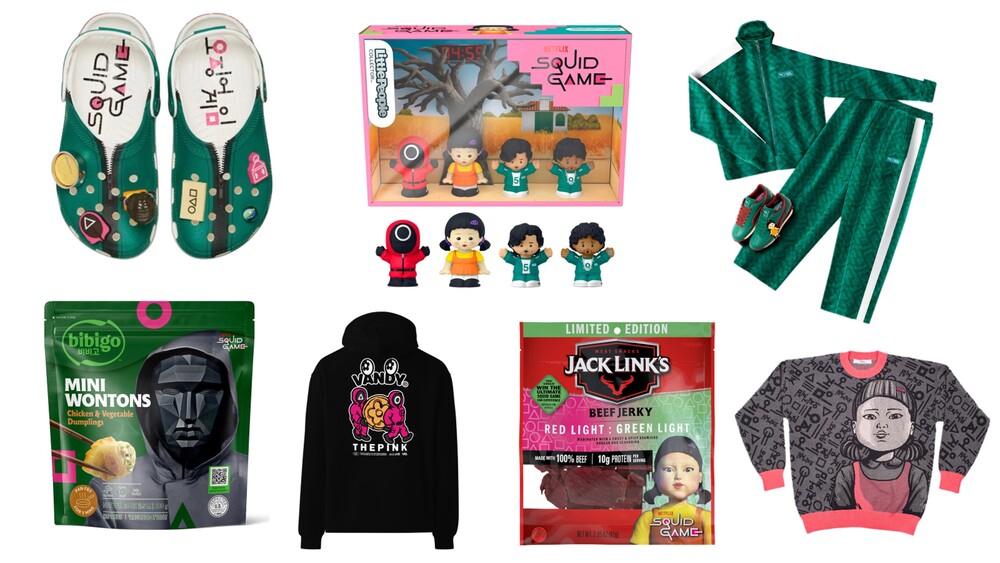
One of the best brand partnerships of 2024 wasn't for sale. New York fashion brand Aime Leon Dore teamed up with luxury car manufacturer Porsche, designing their own custom 933 Turbo.
While it was the custom car that made headlines, it was the accompanying merchandise and media attention that made money.
This collab tapped perfectly into the aspirational nature of both brands. Porsche’s co-sign of Aime Leon Dore brings with it associations of prestige, heritage, and luxury that are so valuable for young luxury brands. Aime Leon Dore, on the other hand, are well-recognized in the fashion world as tastemakers and arbiters of “cool”. Their co-sign establishes Porsche as the heritage luxury car brand that remains desirable and trendy in the modern era.
KITH is a New York-based brand that has a history of appealing to inner child of streetwear enthusiasts. Their flagship store has a KITH treats bar, featuring 23 varieties of breakfast cereals with toppings, milk, and ice cream. They’ve collabed with Cap’n Crunch, Rugrats, Power Rangers, and, most recently, Sesame Street.
While KITH is far from the first to collab with iconic children’s brands, they may be the first streetwear brand to release an entire collection designed for kids and babies.
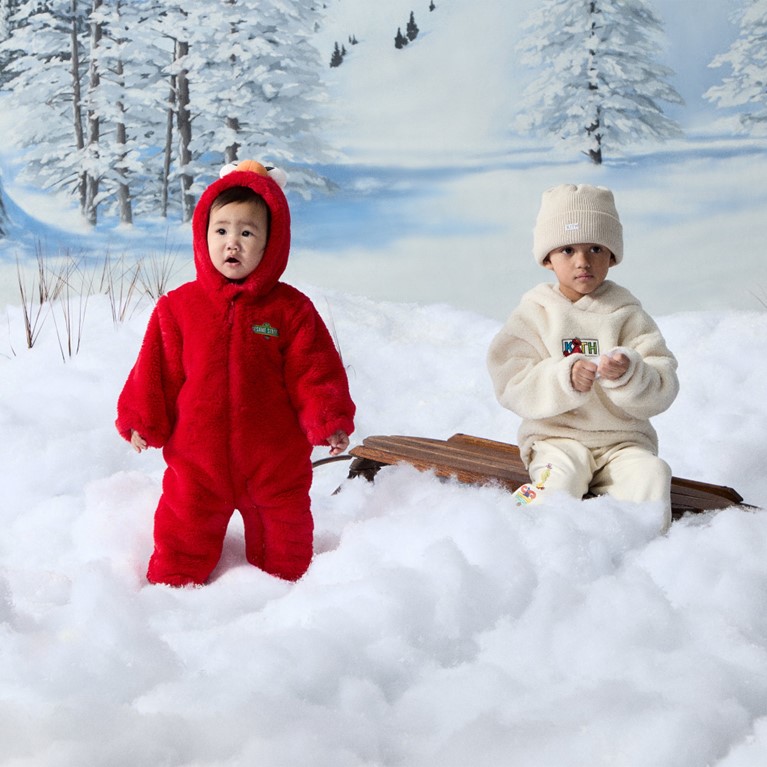
The KITH x Sesame Street collection includes 30 items designed specifically for children and babies, including lunch boxes, onesies, pajamas, and alarm clocks.
Perhaps as streetwear enthusiasts get older and have children, we’ll see collabs like this continue to grow. Being cool won't just be about how you dress, it'll also about how your kids dress.
One of the first high-profile brand x artist collaboration success stories came in 2003 when Louis Vuitton tapped Japanese artist Takashi Murakami to re-design the a line of the brand’s handbags.
The result was the now iconic “multicolor” monogram—which became a staple of early 2000s fashion, proudly worn by celebs like Paris Hilton, Naomi Campbell, Jessica Simpson, and Madonna.
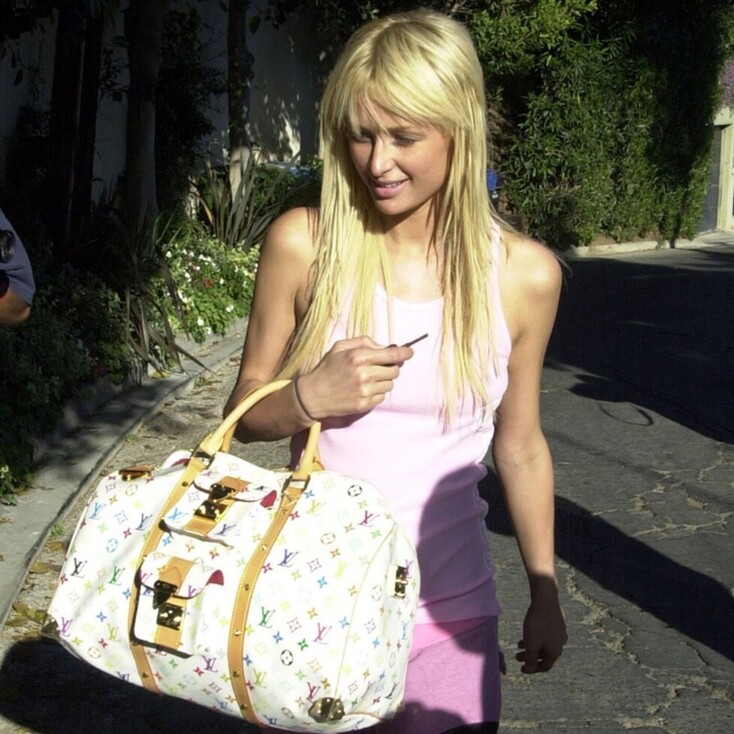
More than 20 years later, as early 2000s fashion makes its way back into the zeitgeist, Louis Vuitton updated and re-released their Murakami collaboration, this time with “it girl” Zendaya as the face of the campaign.
The collection comprises of a massive 200 pieces, including everything from bags, to sneakers, to skateboards, to scarves and sunglasses.
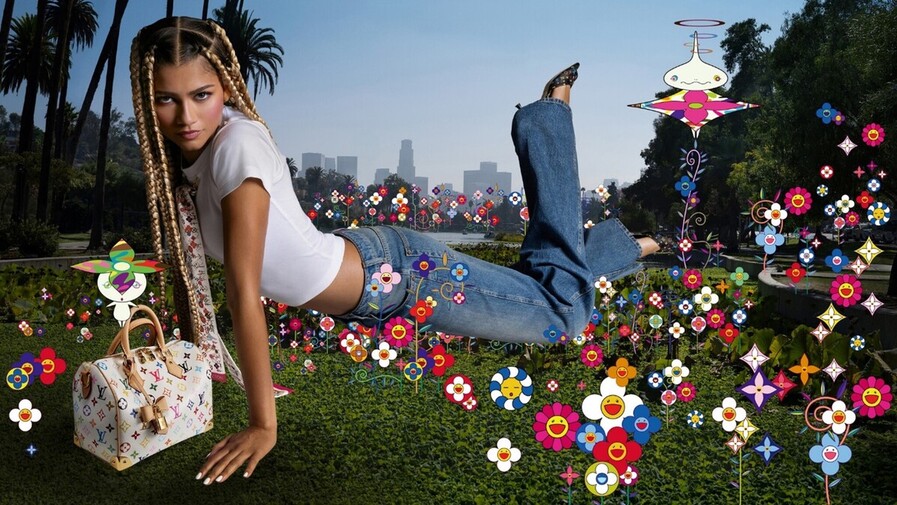
The collaboration between McDonald’s and rapper Travis Scott was unexpected to say the least. But if you’re a brand making your foray into the world of drops—which McDonald’s was—Travis Scott is the celebrity to attach yourself to. Scott’s done hugely successful collaborative drops with Sony, Nike, Dior, YSL, Fortnite, Reese’s Puffs, and many more major brands.
This collaboration saw McDonald’s selling Scott’s favorite order as the “Travis Scott Meal”. If you’re wondering, it’s a Quarter Pounder with cheese, bacon, and lettuce, along with chips, BBQ sauce, and a Sprite with extra ice.
This collab was so successful it led to a shortage of ingredients at many restaurants. McDonald’s has since continued their collaborative meal promotions, dropping meals with J. Balvin, BTS, and Saweetie.
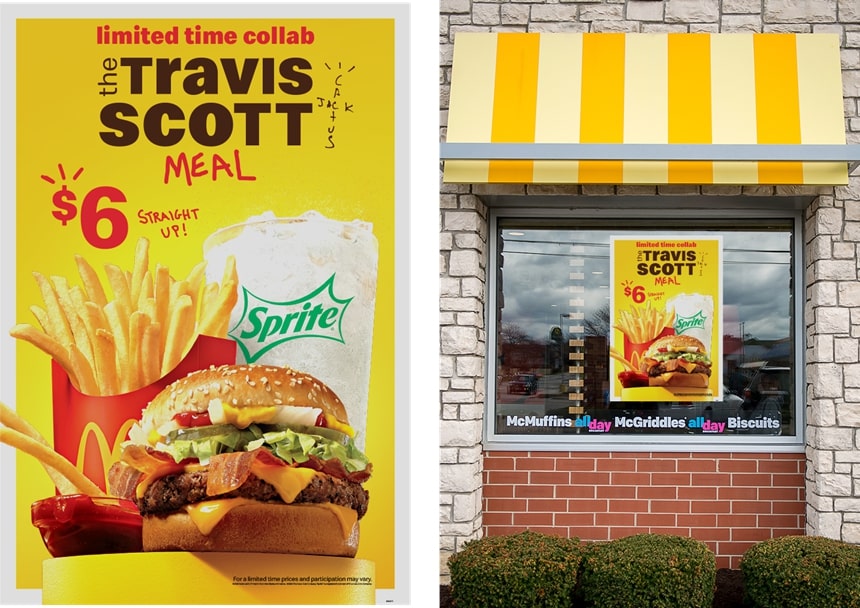
The Chunky Dunky is an unexpected maximalist collaboration between Nike and Ben & Jerry’s. Nike released the shoe in very limited quantities, with a box specially designed to look like the Ben & Jerry’s flavor that inspired it, Chunky Monkey.
The shoe was one of the most hyped sneakers of 2020, selling out immediately. If you want a pair, they’re currently going for almost $3,000 on resale markets.
RELATED: 7 Simple Scarcity Marketing Strategies to Supercharge Ecommerce

In this brand collab, the Van Gogh Museum teamed up with Pokémon for a collection of post-impressionist paintings of the famed Japanese “pocket monsters”.
The exhibition was popular, but the collab's merch was the real star of the show. It attracted so much traffic that it took the Museum’s site down and they rescheduled the drop indefinitely. Those lucky few who nabbed the merch have already listed them on resale marketplaces, where they’re selling for up to $700.
Imagine trying to explain that to the 19th century painter.
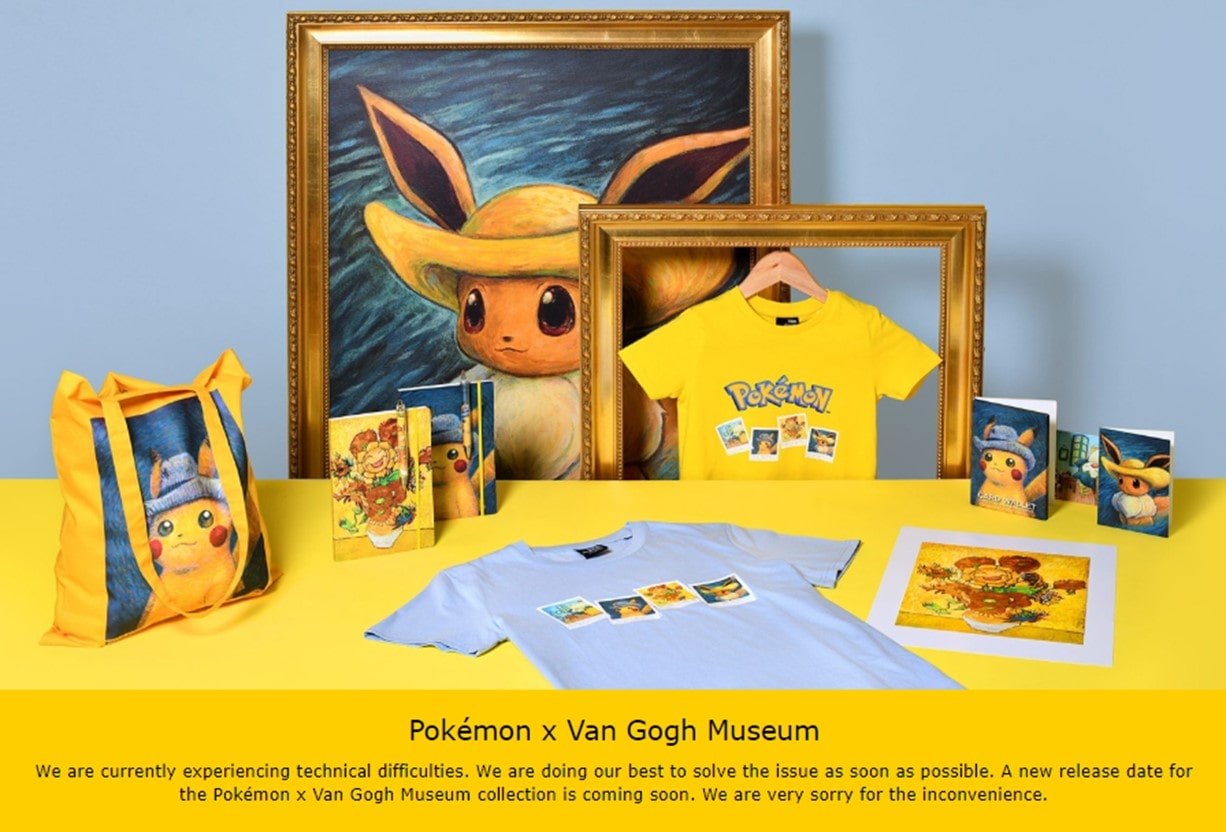
MSCHF is single-handedly showing the world the power of the product drop model. The brand does nothing but random collabs with brands and limited-supply drops. They’ve dropped everything from new fonts to alcoholic drinks to Tiffany & Co. collaborations.
One of their best brand collabs involved working with Rihanna’s Fenty Beauty on “Ketchup or Makeup?“. The product is basically what it sounds like. It contains red packets that are either red Fenty Beauty lip gloss, or ketchup. Customers just have to buy it and see what they get.
RELATED: Exclusive Fenty by Rihanna Drop Sends Record Traffic to Harvey Nichols
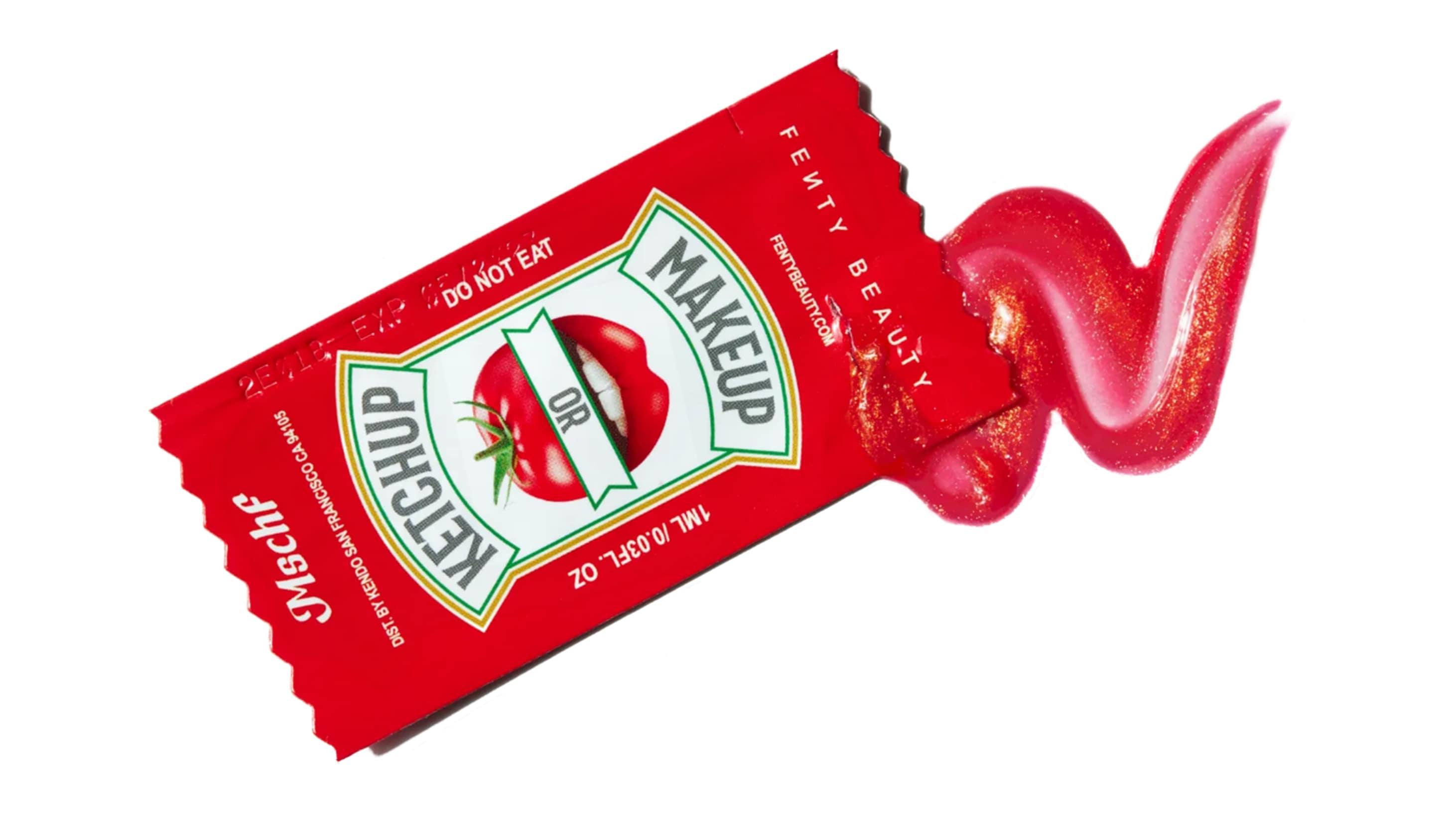
There’s no rhyme or reason to their drops. No consistency at all. But MSCHF attracts major collaborators nonetheless, and everything they release sells out.
Their website copy epitomizes and satirizes the product drop model:
BUY NOW! BUT WHY NOW? BECAUSE TIME’S OUT. WHY ELSE? DON’T OVERTHINK IT. IT’S WHAT YOU’VE ALWAYS WANTED, ISN’T IT? BUYING, WITHOUT LIMITS, WITHOUT QUESTION. WE KNOW YOU’RE PARCHED.
THE THRILL OF SIMPLY BUYING. NOW. IT’S WHAT YOUR WHOLE LIFE HAS BEEN RAMPING UP TO, RIGHT? ALL THOSE LESSER “BUY” BUTTONS, WHICH COULD NEVER SATIATE. A PURCHASE IS A MONETARY MIRAGE UNTIL IT’S IN YOUR HAND. BUT DO SOME DISAPPEAR INTO THE HORIZON ENTIRELY?
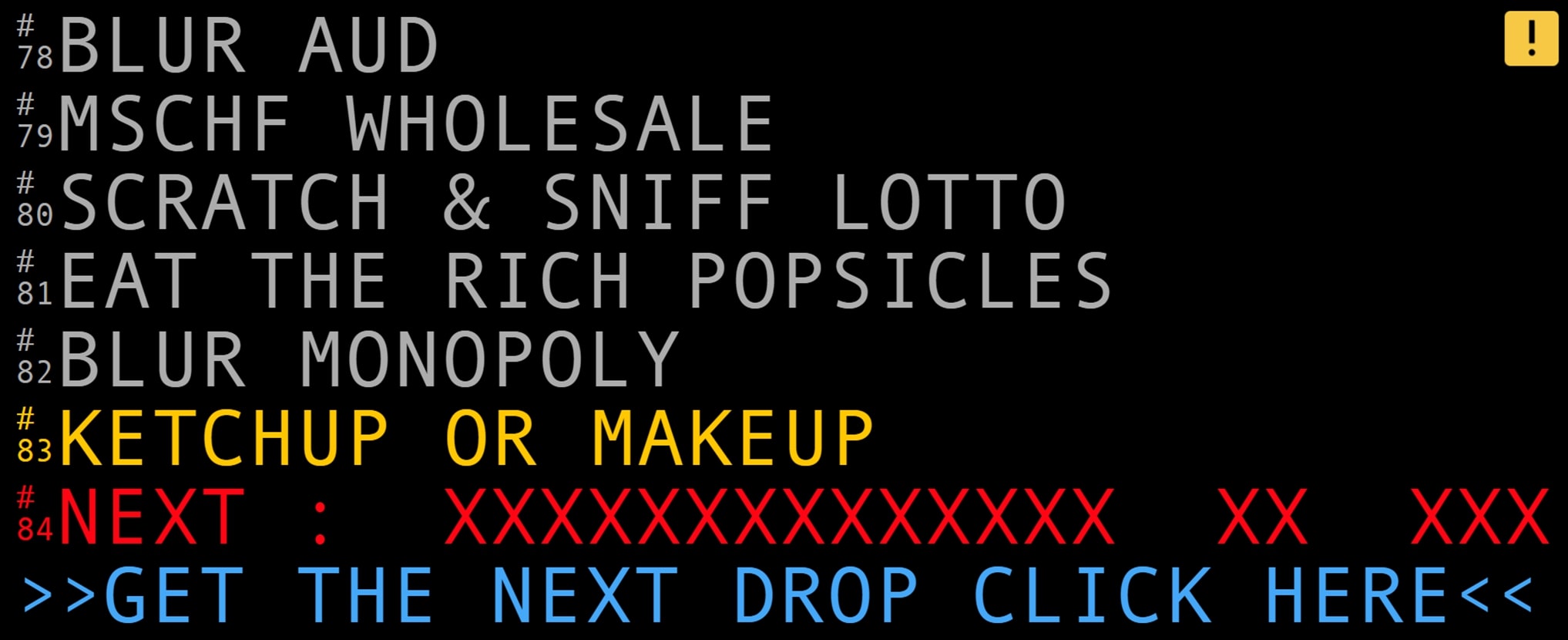
Fragment Design has collaborated with Bulgari, Rolex, Louis Vuitton, Moncler, Nike, Starbucks, Leica, Polaroid, Maserati, Pokémon, Beats—enough brands to make its own list.
So what’s Fragment Design and why does everyone want to work with them?
Fragment Design is a brand that does nothing but brand collaborations. It’s kind of like a streetwear and design product drop consultancy. The secret to Fragment’s success, though, comes from its owner, Hiroshi Fujiwara.
Fujiwara is often called the Godfather of streetwear. He basically invented the product drop trend in the early 90s (you can learn about his story in our article on drop culture).
Fujiwara’s status in the fashion world makes a collaboration with Fragment Design a coveted seal of approval from a streetwear and design icon.
Just about every Fragment collab sells out and realizes increased value on the secondary market. Like the Greek myth of King Midas, everything Fujiwara touches turns to gold.
RELATED: 6 Common Product Drop Challenges & How to Overcome Them
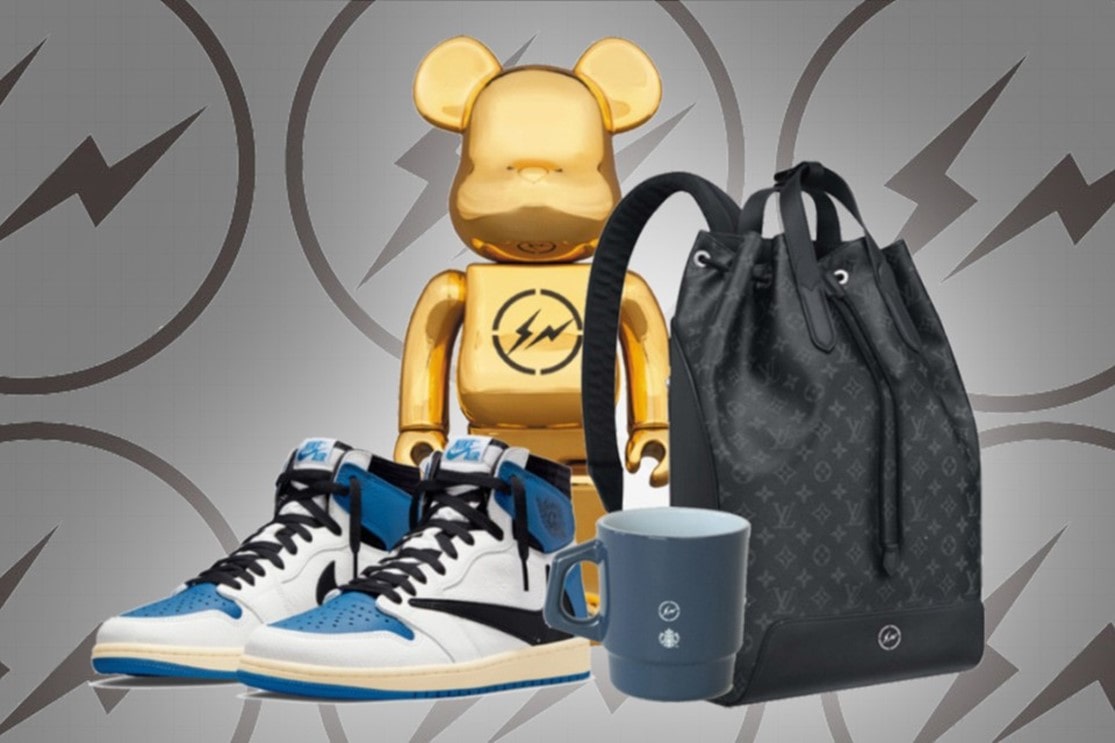
IKEA made its foray into drop culture in a hyped collaboration with architect, designer, and influencer Virgil Abloh.
In this collab, standard IKEA items were elevated by Abloh’s artistic flair. Customers across the globe rushed to snatch up the limited-edition furniture, which included a rug in the style of an IKEA receipt, a Mona Lisa print, and a twist on the iconic IKEA bag.

In certain locations, IKEA even put Abloh’s signature quotation marks around their store logos, producing “IKEA”.
Some people are just magnets for brand collabs. Hiroshi Fujiwara is one of them. Travis Scott is another. But when a brand is looking to collab with an artist, their list often begins and ends with Daniel Arsham.
His instantly recognizable yet highly adaptable style makes him the go-to man when you want you want to see your products reimagined in cream color with signs of degradation.
Arsham has collabed with Dior, Pokémon, adidas, Hot Wheels, Porsche, Disney, Pharell Wiliams, and many more.
Our favorite of Arsham’s collabs, though, is the 6,000 cans of Hienz tomato soup he released in 2019. With the price tag and contents of an actual can of soup, the 4-year-old tins can still be found online for over $100. Perhaps not for long though. In a recent Instagram post from Arsham about the cans, one commenter asked “Anyone else’s can starting to expand?”
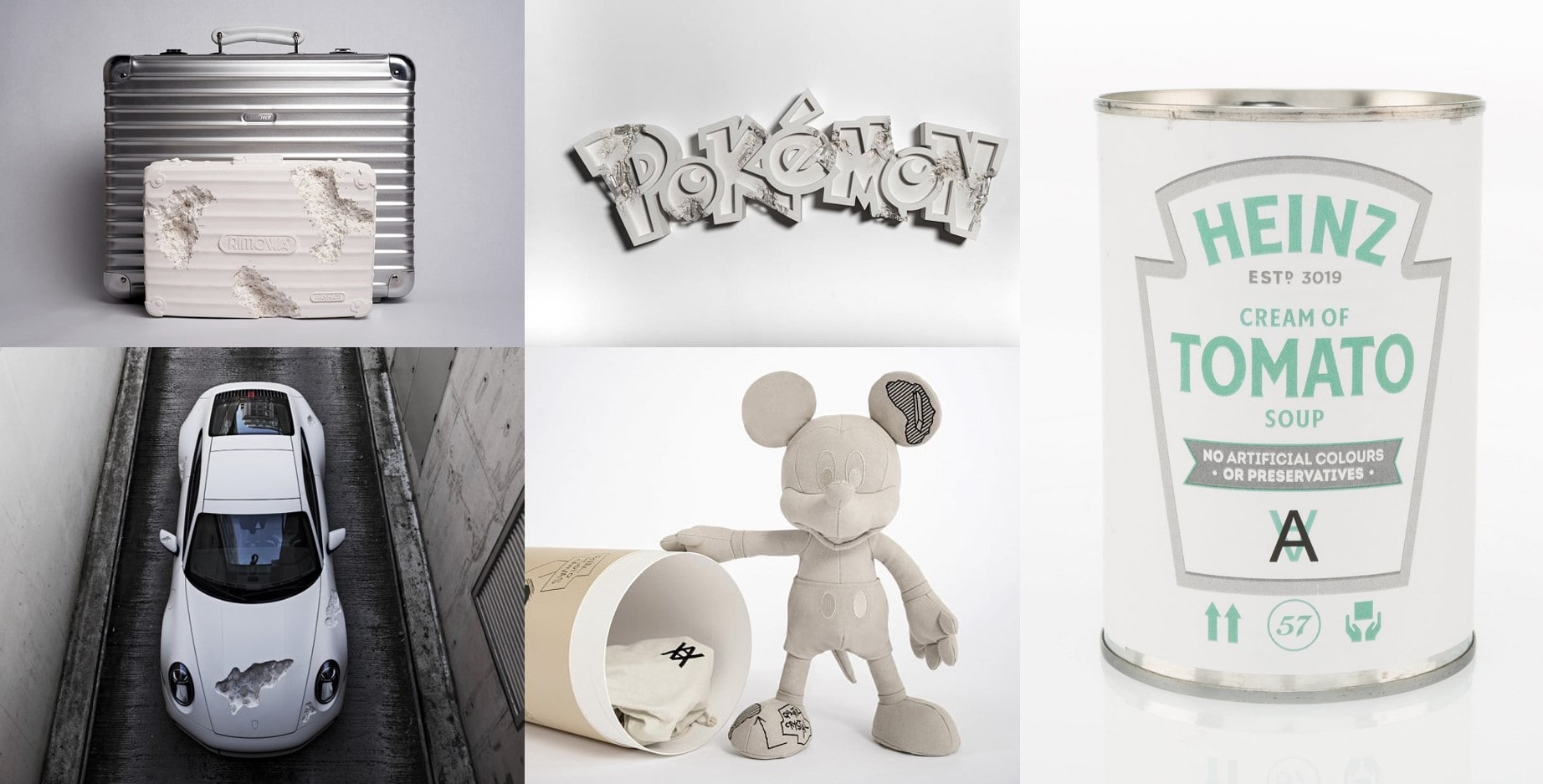
Tech startup Stir is among the first software brands to embrace the drop model. But they do so differently to other brands on this list. Stir uses drops as practical pieces of content marketing.
Stir is a one-stop-shop for content creators’ money management and collaborations. Their drops are free tools that are designed specifically to be useful for the content creator community.
They’ve dropped services like fyp.rip, which lets TikTok creators download every video they’ve ever made; OnlyTweets, which lets Twitter users put their account behind a paywall; and MerchWith, a collection of facemasks made in collaboration with content creators.
It’s a genius strategy for building awareness among their target audience by dropping useful free tools.
RELATED: The 5 Powerful Brand Benefits of Product Drop Marketing
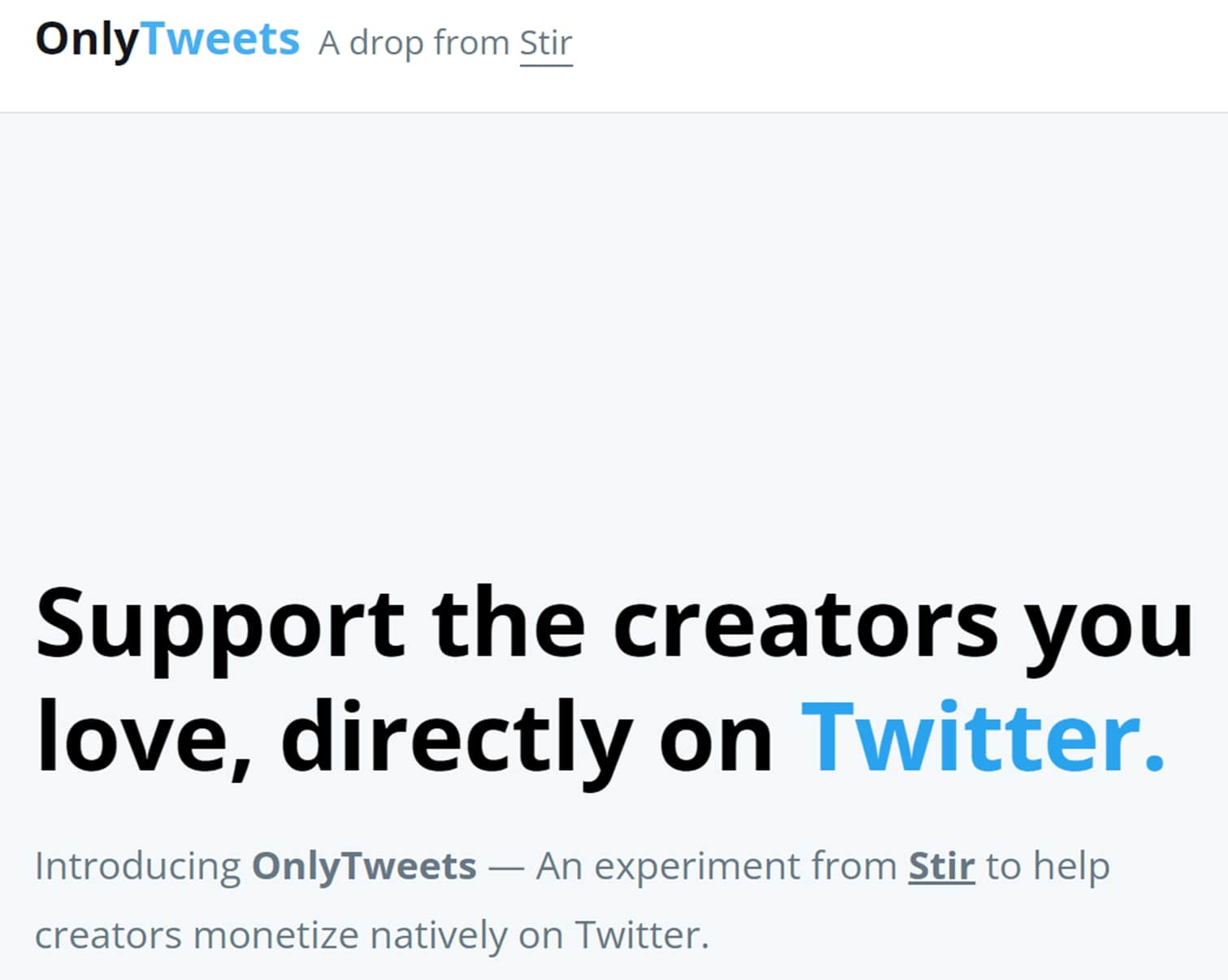
Have you ever felt like your kitchen appliances weren’t getting enough attention?
Then Dolce & Gabbana’s product coloration with Smeg is perfect for you. The luxury fashion house teamed up with the home appliance manufacturer to product a series of loud, colorful, (and expensive) toasters, kettles, juicers, and blenders.
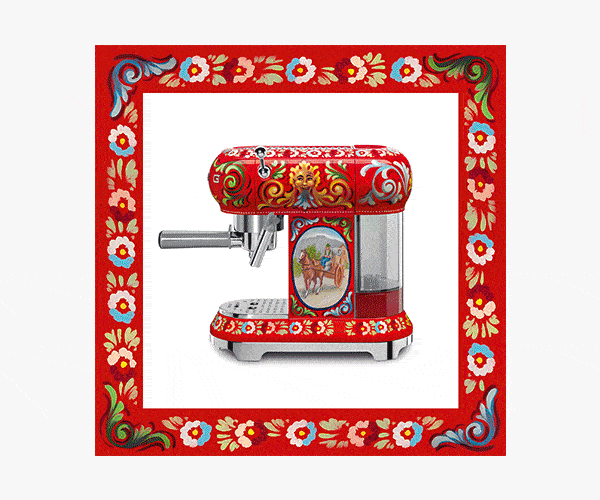
No stranger to controversy, Kanye West made headlines after insisting his latest Gap and Balenciaga brand collaboration be stocked in massive garbage bags in Gap stores.
As it turns out, there’s a reason stores put their clothes on hangers. The collab had thousands of fans scrambling through the giant bags, struggling to find the items they wanted in their sizes.
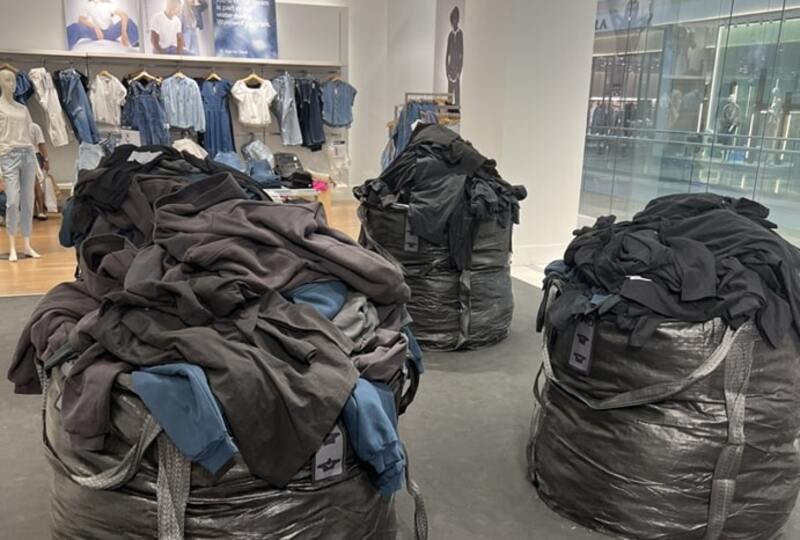
Gap, of course, obliged Kanye’s vision. After all, their collaborative drops with Kanye have seen their biggest sales days of all time. Gap’s CEO Sonia Syngal said:
“Our newest Yeezy Gap icon, the Perfect Hoodie, delivered the most sales by an item in a single day in Gap.com history … With over 70% of the Yeezy Gap customers shopping with us for the first time, this partnership is unlocking the power of a new audience for Gap, Gen Z plus Gen X men from diverse backgrounds.”
But Gap's 10-year brand partnership with Yeezy was not to be. The brand was one of several to cut ties with West after his antisemetic remarks in late 2022.
RELATED: How to Use Scarcity Marketing & Product Drops for Black Friday Success
To celebrate the 25th anniversary of the famous Fendi Baguette bag, Fendi collaborated with Tiffany & Co. on a series of the bags in Tiffany's trademark blue.
This product collaboration was only available for 24 hours. With massive demand, Tiffany & Co. set up a virtual waiting room to protect their site from the traffic, build hype, and ensure fair access.
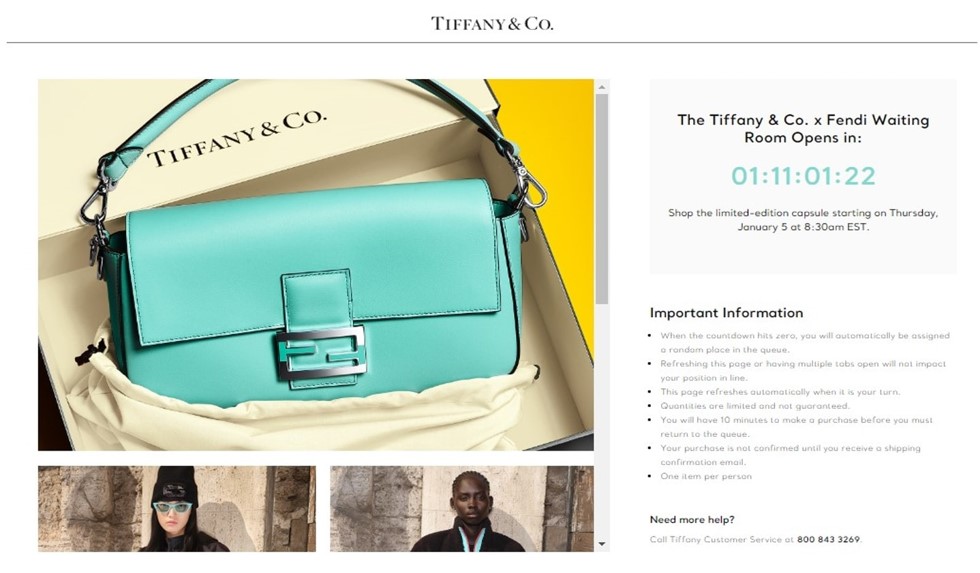
If you’re looking to drive hype, one of the best brand collabs you can get is with K-pop supergroup BTS. Their fans are dubbed called “the army”, and with good reason—they charge at just about anything with BTS’ name attached to it.
When singer Junkook ate Samyang Spicy Ramen on livestream, the Samyang site crashed.
When V took the cover of ELLE magazine Korea wearing Celine, Celine’s website crashed.
So when LEGO released a BTS lego set, you can probably guess what happened.
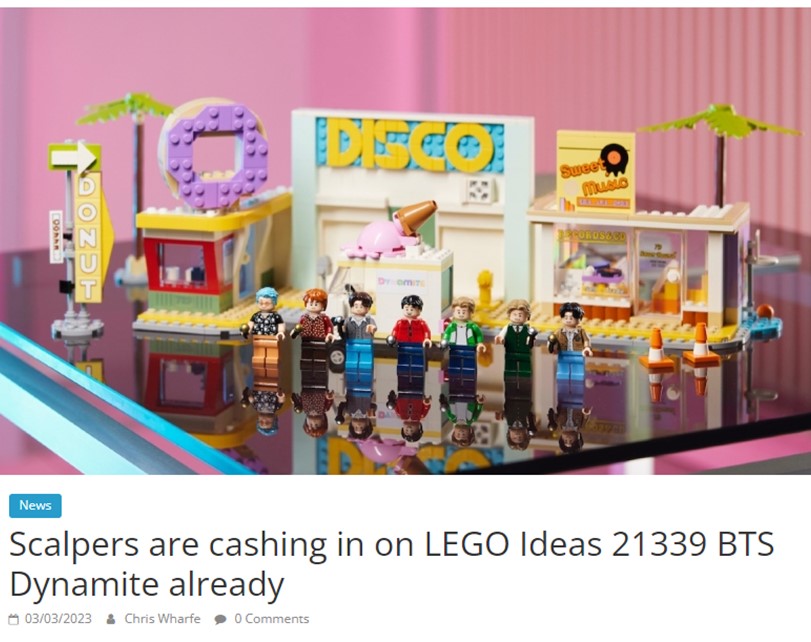
Adidas made a splash in the NFT world after releasing a collaboration with some of its biggest names. Teaming up with Bored Ape Yacht Club, PUNKS Comic, and gmoney, they released NFTs that gave access to real-world limited-edition merchandise and much more.
The NFT drop was a massive success, with Adidas not only making $24 million off the drop, but also making for a name for itself in the Web 3 world and lifting the valuations of its collaborators’ projects in the process.
RELATED: How Major Retailers are Using NFTs to Drive Sales & Boost Brand Loyalty
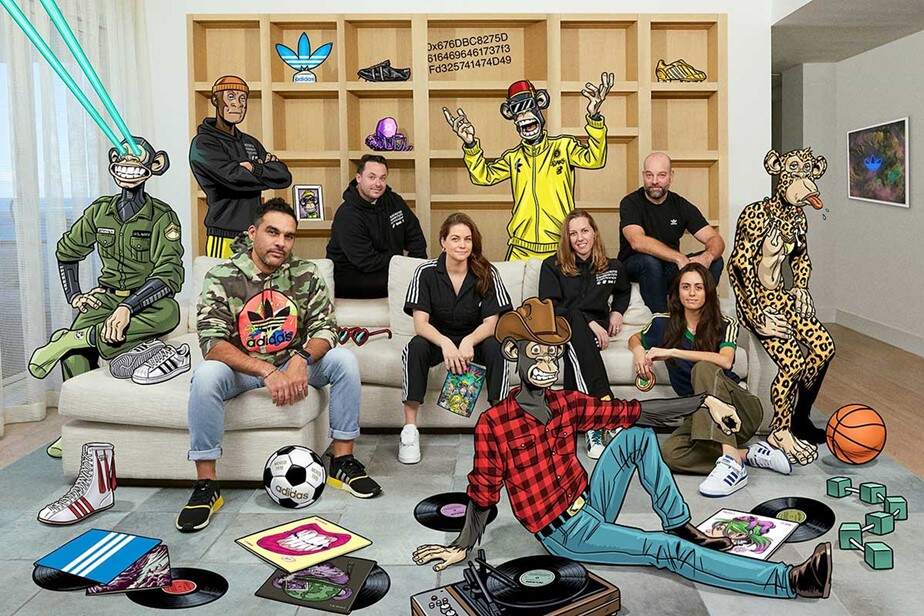
In a rare two-way cross category collaboration, Issey Miyake and Dyson took a stab at one another’s product categories.
The high-end vacuum brand designed limited-edition luxury apparel, and the Japanese luxury brand designed its own vacuum cleaner.
Which one do you think did it better?
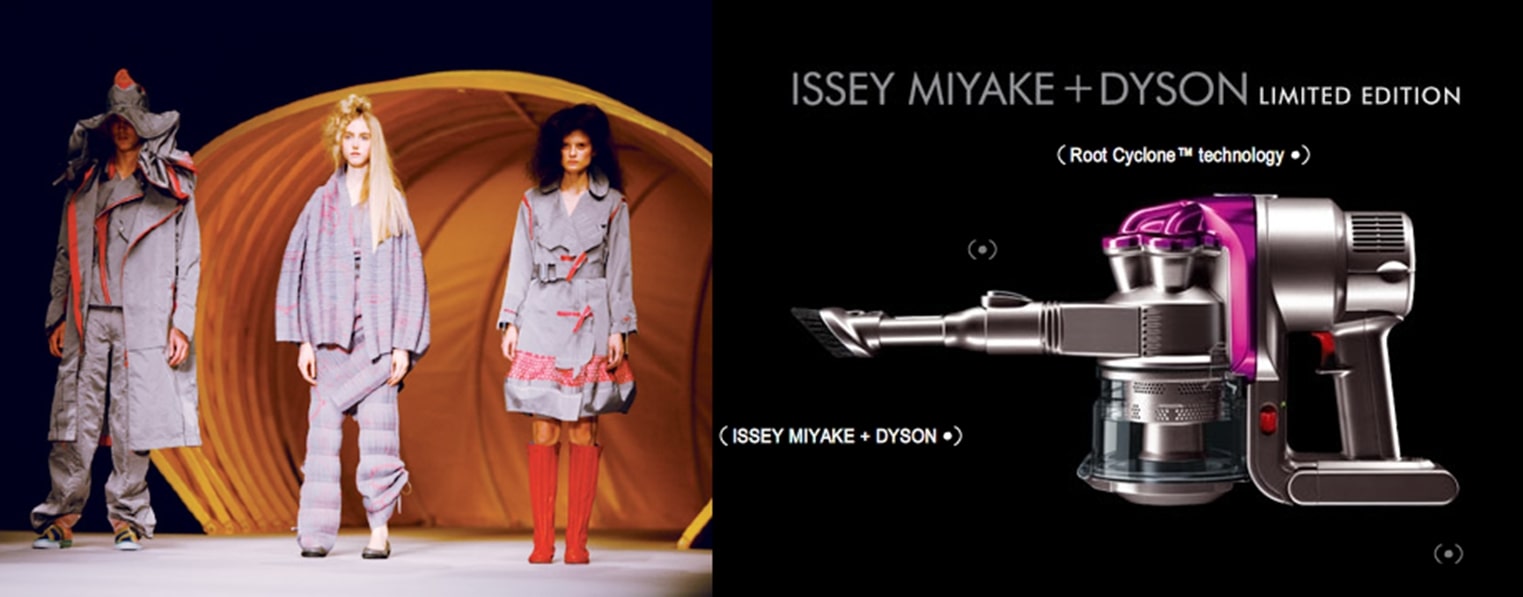
Gucci’s brand collab with The North Face was one of the biggest drops of 2021. The drop perfectly brought together Gucci’s loud luxury style (and price tag) with The North Face’s high-quality outerwear.
The two brands fully embraced the other’s values and styles, even coming up with a clever joint logo.
Items from the collection were promoted in a series of creative short films and were worn by superstars A$AP Rocky and Billie Eilish. Demand for the collection was so high it crashed Gucci’s site.
RELATED: How High Online Traffic Can Crash Your Website

Kim Kardashian’s brand SKIMS is no stranger to the product drop strategy. Since the brand launched, it’s been using product drops and limited release restocks to capture hype and loyalty.
During one of these SKIMS drops, Kim Jones, the creative director of Fendi, realized no one in his office was paying attention to him:
"The idea for the collaboration came about when my team and I were sitting around a table at the studio in Rome," Jones explains. "Suddenly, all the women went silent and started looking at their phones. I didn’t know what was going on, but they were waiting for the launch of the new Skims collection. It was then that I thought: let’s do something together."
RELATED: Product Drop Case Study: SKIMS
The brand partnership was a massive success. It had a waitlist of over 300,000 people and, of course, sold out almost immediately—reportedly making $1 million in the first minute.
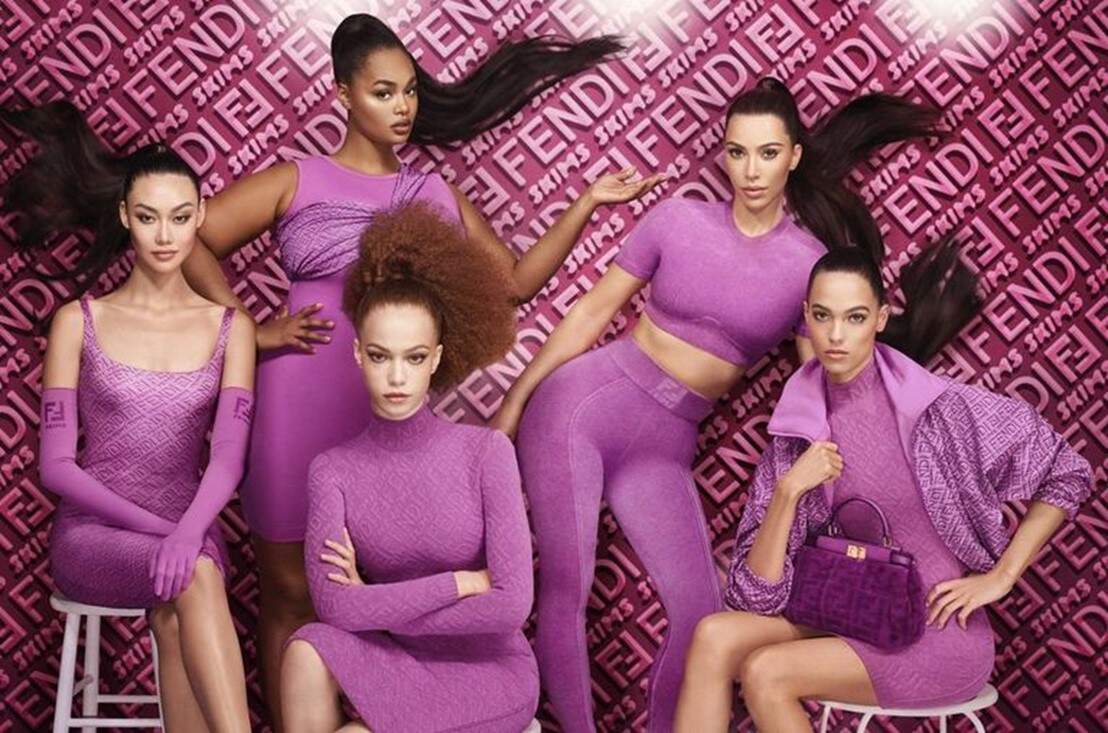
DoorDash recently announced access to exclusive collaborative product drops as part of their food delivery subscription service.
They’re among a new wave of brands using the product drop model to encourage loyalty through subscription models and brand relationships.
RELATED: The 5 Powerful Brand Benefits of Product Drop Marketing
Their first drop? A hot sauce collaboration with musician Chlöe Bailey.
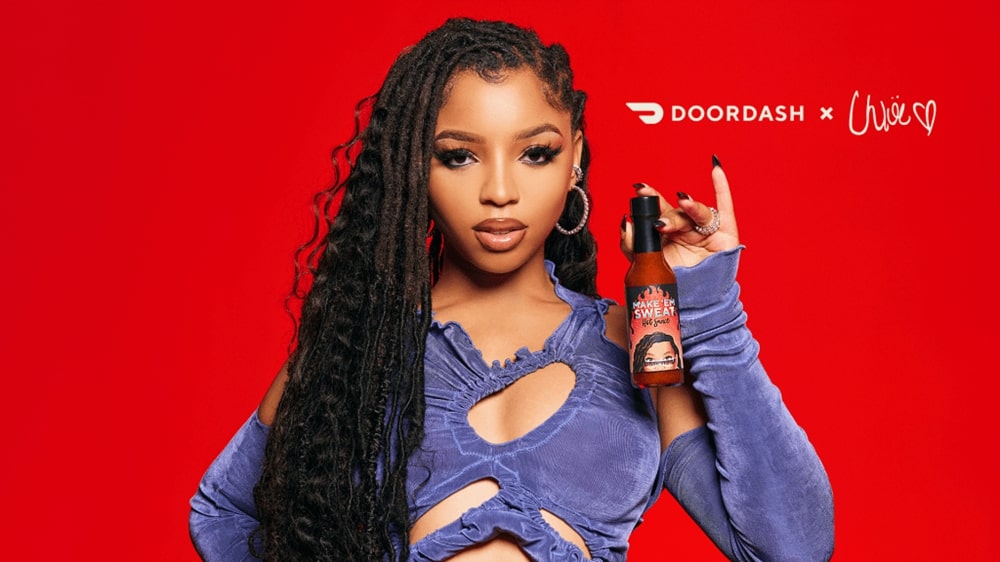
New Balance’s product collaboration with New York streetwear brand Aimé Leon Dore (ALD) was an inspired move that marked something of a brand renaissance for New Balance.
Lead ALD designer Teddy Santis found an archival New Balance model that was out of production (the 550) and re-released it with an expert marketing campaign for the collab. The drop was one of the best collabs of the year, with the 550 quickly becoming the hottest sneaker on the market.
The success of the drop saw Santis appointed as New Balance’s creative director shortly after. And the hype around the collab was so large that restocks of the sneaker it was based on (the 550) now see virtual queues of over 70,000, according to Glamour Magazine.
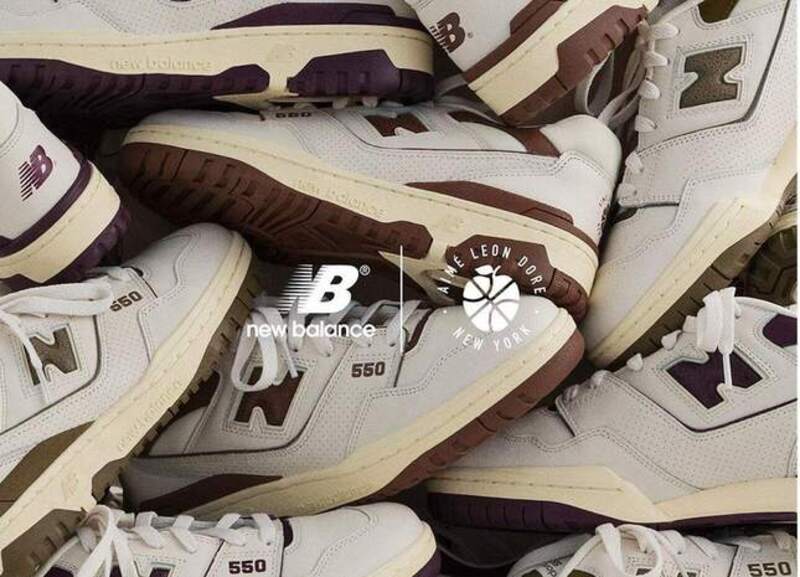
Instagram and Twitter lit up when Levi’s announced its 2023 collab with cult classic Japanese animated film Princess Mononoke.
The collection was “inspired by the film’s landscapes and mystical characters,” and included a graphic print jacket, hoodie, denim overalls, tee, and kimono denim jacket.
Members of Levi’s Red Tab loyalty program got first access to the drop, which sold out almost immediately. In less than a day, the products were on eBay for up to 5x their retail price—making the Red Tab membership very attractive indeed.
Target’s brand collaborations date back to the 1990s. Like Kanye and Balenciaga’s collaboration with Gap, Target’s collabs are often about delivering high fashion at an affordable price.
One of Target’s most extensive and best brand partnerships was with women’s resort wear brand Lilly Pulitzer. The collection involved 250 products and was such a hit it saw huge queues outside Target stores and even crashed Target’s site.
RELATED: How Lilly Pulitzer Runs Massive Seasonal Sales “without the risk of failure”
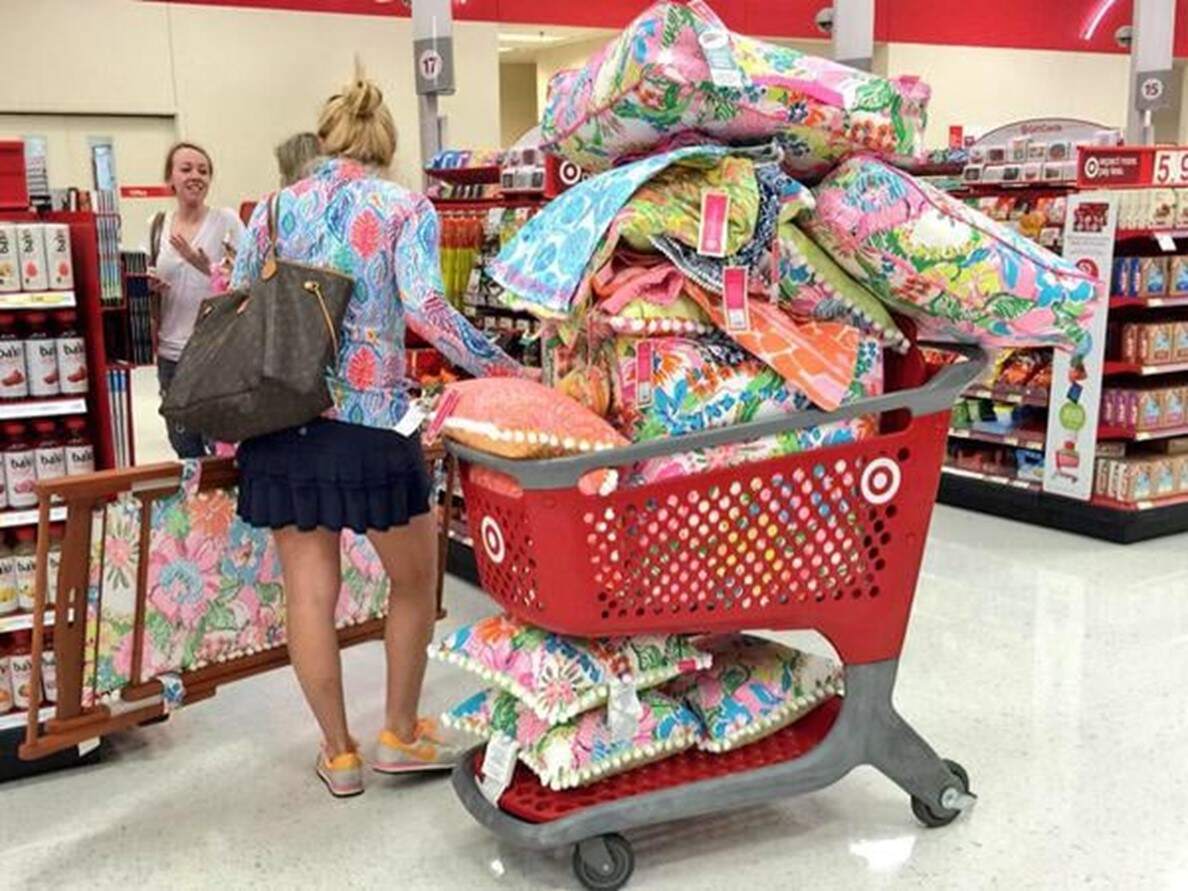
What does makeup have in common with Star Wars? Not much, but that didn’t stop CoverGirl from collaborating with the massive franchise on an exclusive makeup collection.
In this collaborative drop, customers could choose between the light side and the dark side with a selection of light and dark Star Wars themed beauty products.
RELATED: Everything You Need to Know About Product Drops: Strategies, Benefits & Examples
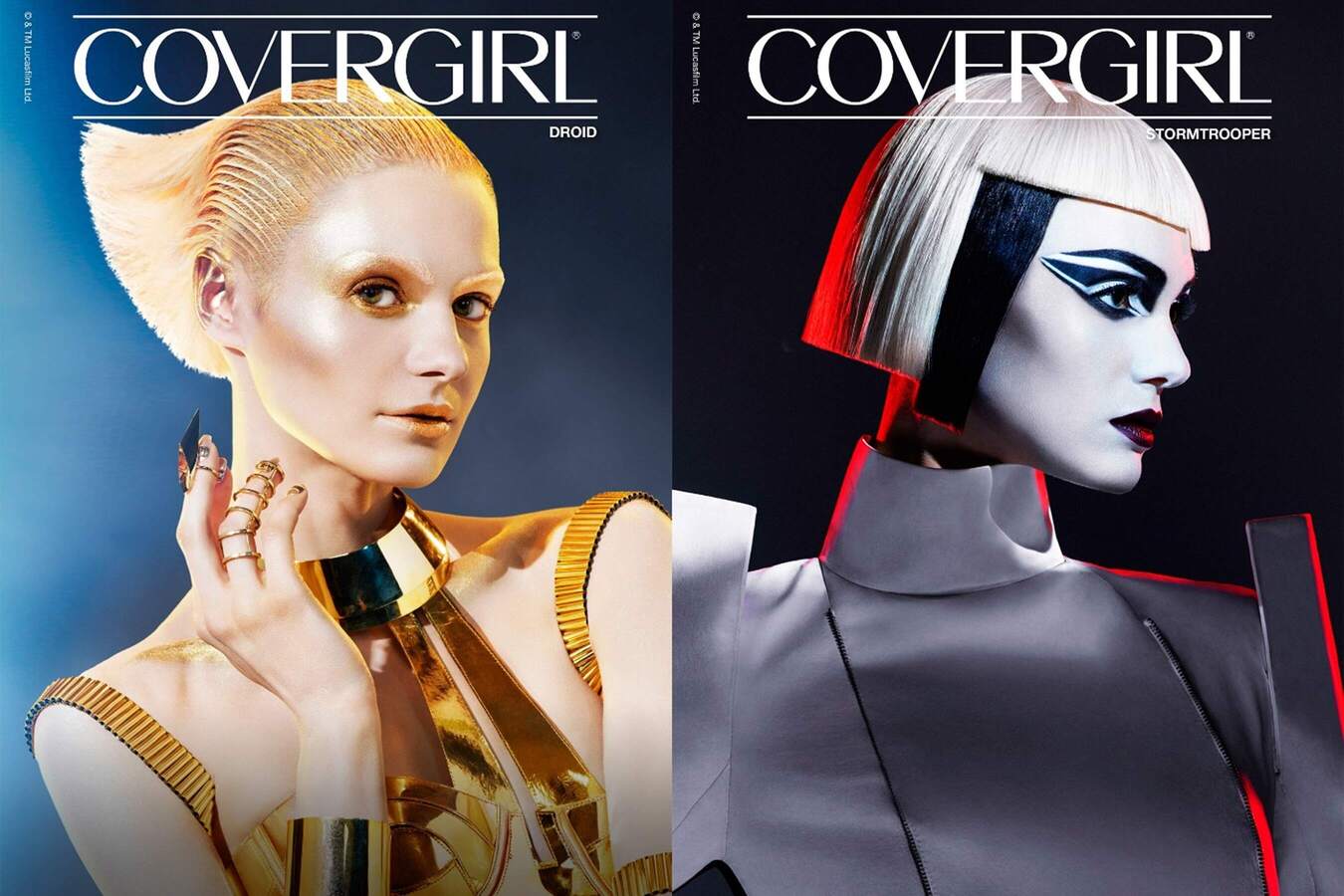
Balenciaga and Crocs are both experts in collaborative product drops. Balenciaga has collaborated with Bang & Olufsen, Mercedes, Adidas, Gap, and Kanye West. And Crocs’ extensive brand collaboration strategy has reinvigorated its brand over the past few years. Just some of the many Crocs’ collabs include Justin Bieber, KFC, BEAMS, Salehe Bembury, and Bad Bunny.
But the Crocs x Balenciaga collaboration is a special kind of unexpected. Love it or hate it, you can’t deny the visceral reaction it elicits, and the massive marketing value it drove for both brands.
Without further ado: high-heeled Balenciaga Crocs.
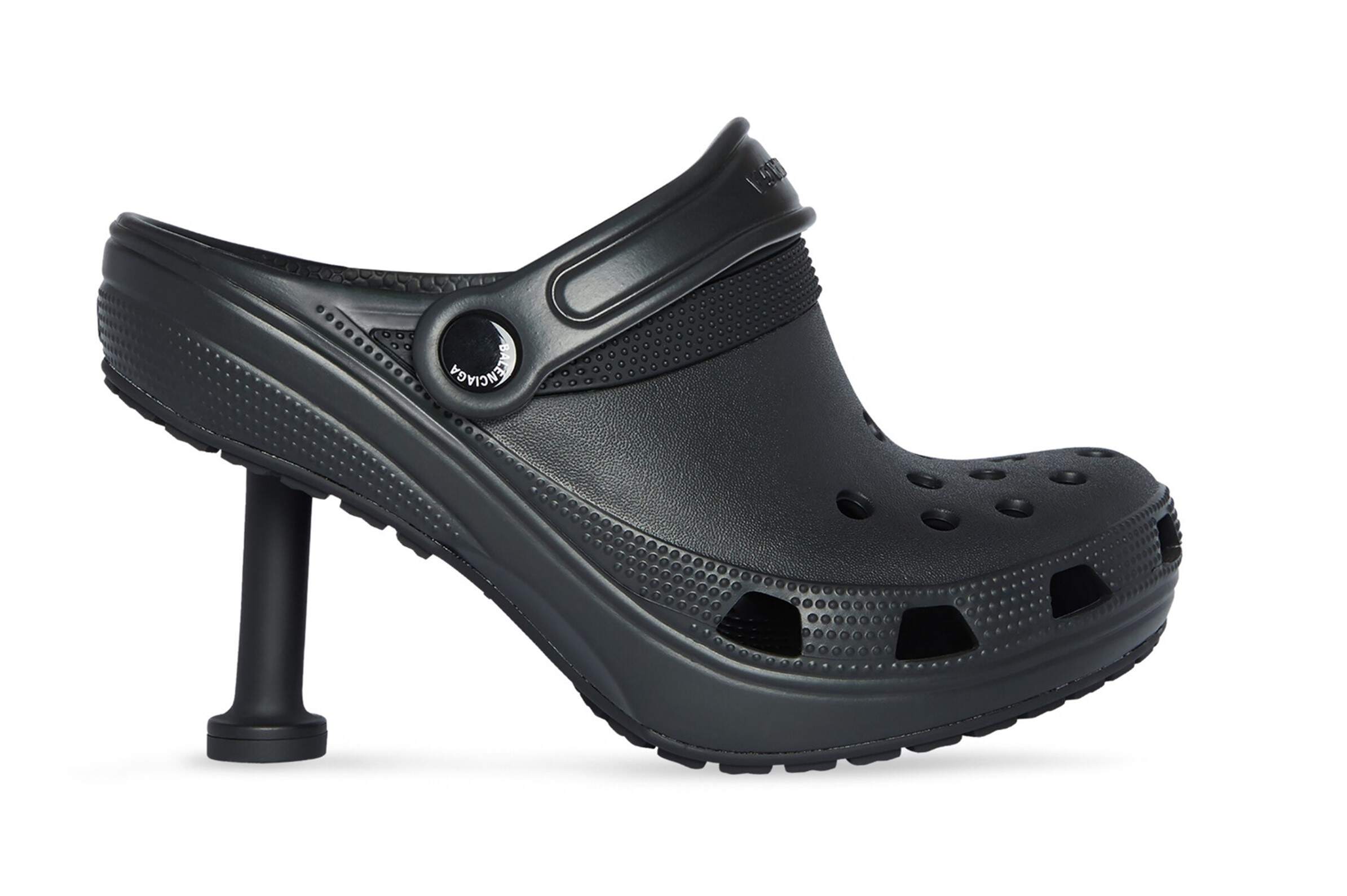
Canada’s biggest fast-food chain Tim Horton's teamed up with Canada’s biggest pop star Justin Bieber for a limited-edition donut collection called Timbiebs Timbits.
Tim Horton’s CEO José Cil said the brand x brand collaboration was “one of the more successful traffic-driving initiatives in recent memory and outperformed our internal expectations.”
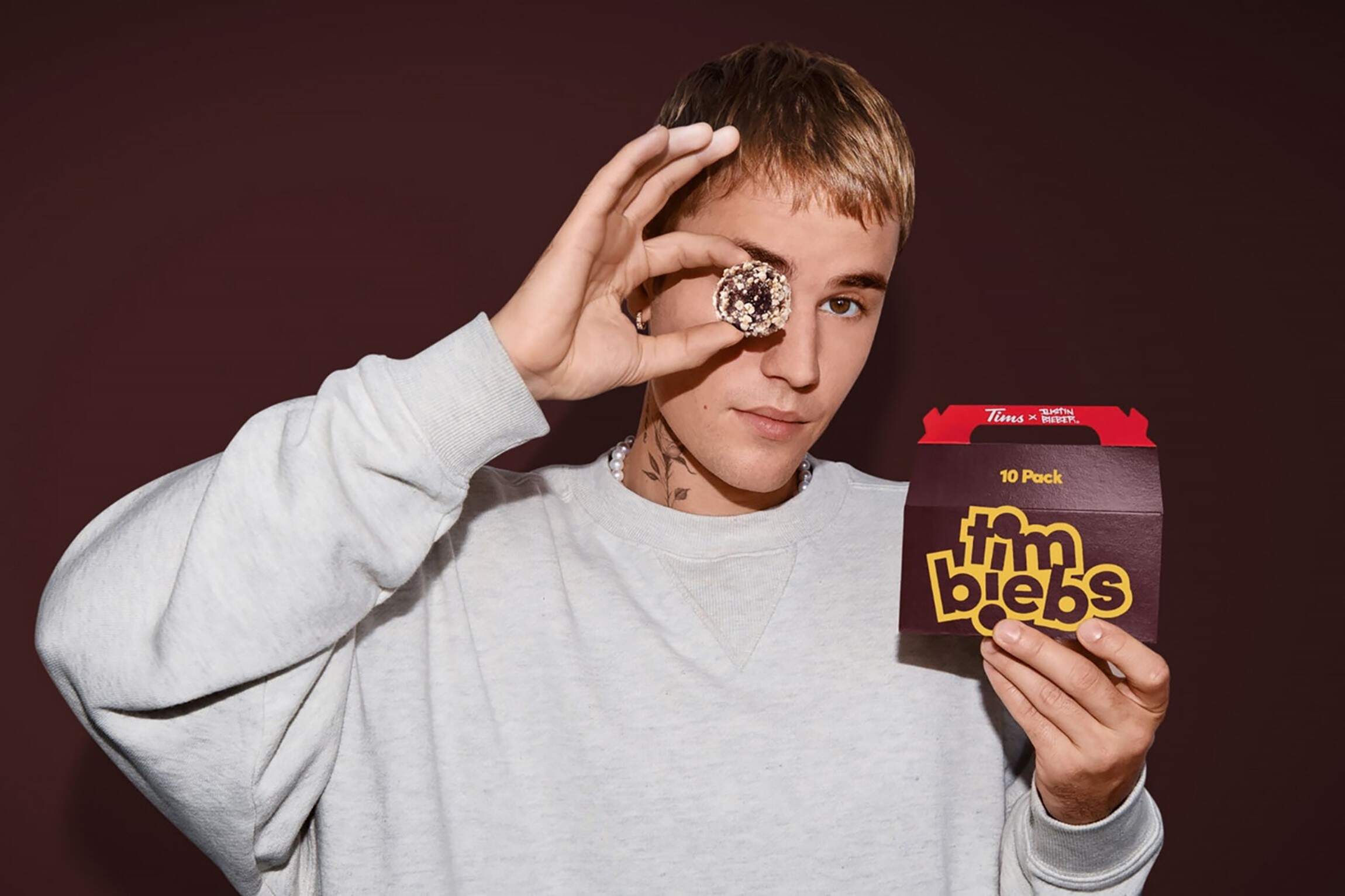
In this brand collab, Adidas teamed up with Arizona Iced Tea to create a limited-edition sneaker with the iced tea brand’s famous price tag: 99-cents.
Of course, this was more of a marketing play than an attempt at real profits. But it worked. The release of the Arizona Adidas sneakers was so hyped police had to shut down the New York pop-up store. The collab is going for almost $2,000 on resale markets today—a tidy profit for those who managed to buy the shoe for 99-cents.
RELATED: Everything You Need to Know About Preventing Sneaker Bots
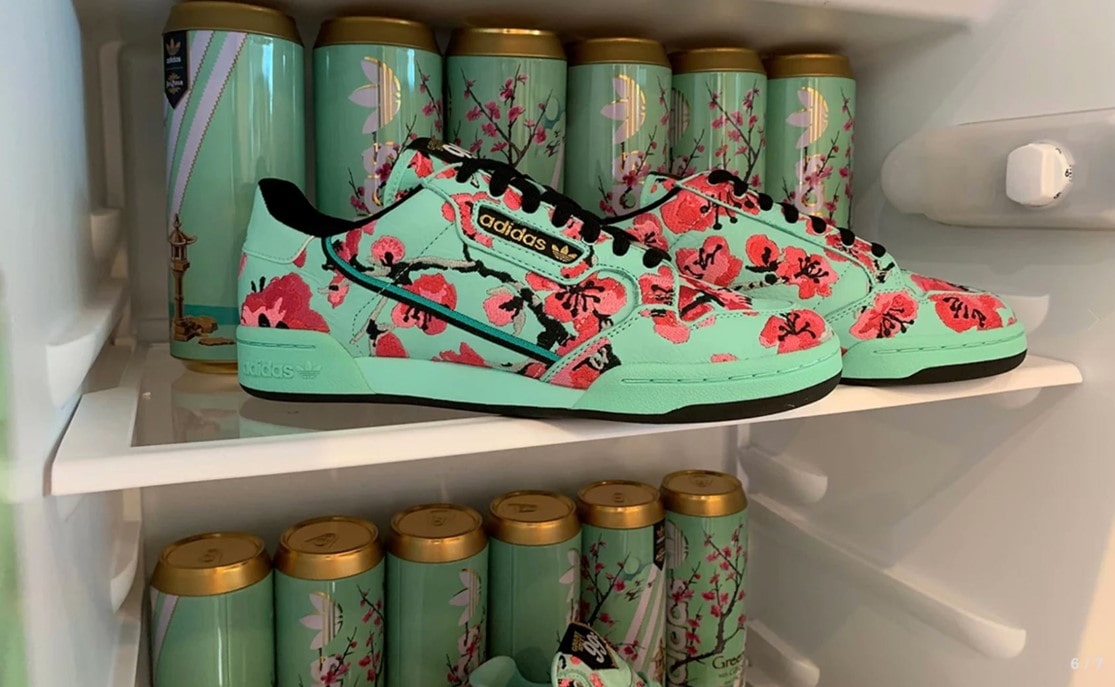
Where does an 80-year-old French luxury brand like Balmain find inspiration in this modern era?
Barbie, of course!
In this collaborative capsule, Balmain partnered with Mattel to produce a collection of Barbie-inspired clothing. The two brands also released limited-edition toys, and a collection of NFTs.
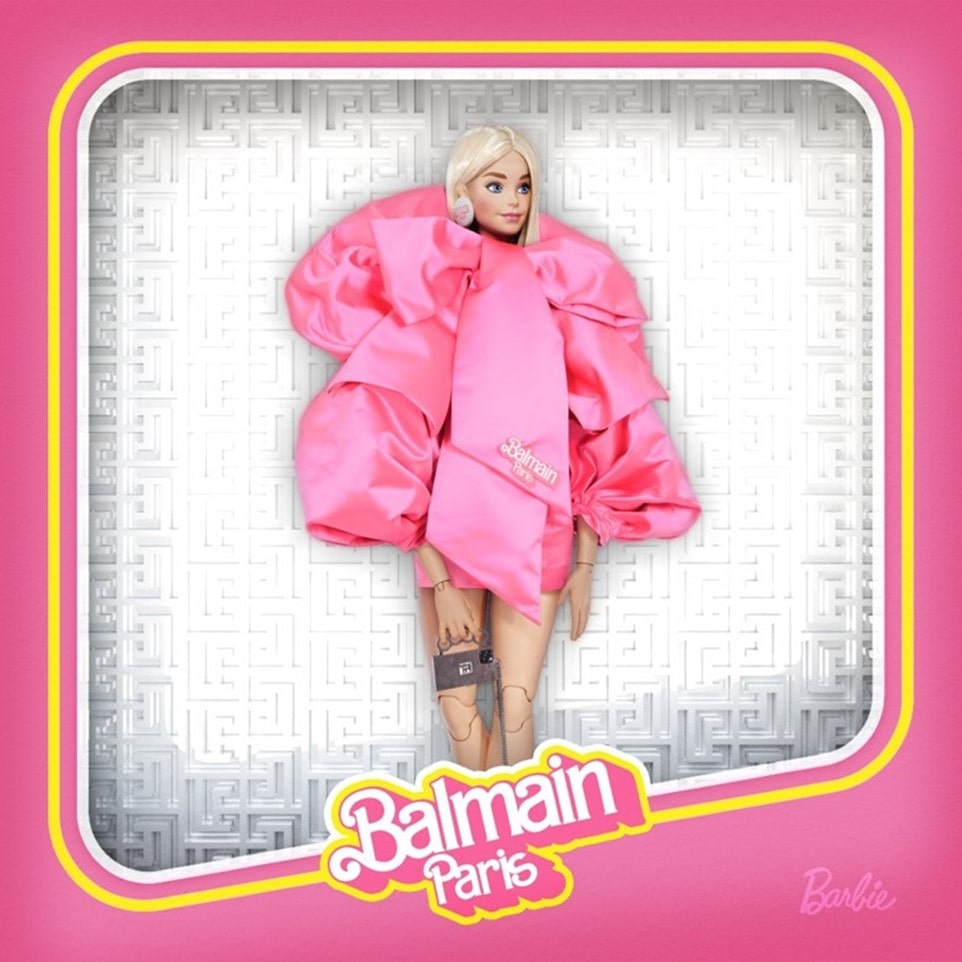
The drop model isn’t just for the world of retail. Video games like Fortnite have taken the drop model into gaming by dropping limited-time in-game experiences.
Of course, like just about every brand that adopts a product drop strategy, Fortnite enlisted Travis Scott to help them with the task.
Together, Scott and Fortnite held a massive interactive concert that attracted a massive 12.3 million concurrent players (not to mention almost 200 million YouTube views)—making it the biggest concert ever.
This list of brand collaboration drop examples could go on forever. Indeed, several of the brands and people we’ve mentioned in this list—from Supreme to Crocs to Fragment Design to Nike to Travis Scott and Kanye West—have done so many drops each of them could make up their own article.
But by now, you get it. Product drops and brand collaborations aren’t just a “drop” in the ocean of retail. They’re a new conversion play that’s gaining traction and being embraced by more brands across more industries with each year that passes.
Collaborative drops are enabling brands to generate hype, create headlines, attract new customers, and boost affinity among existing customers. They’re an attention-grabbing, often unexpected, sometimes ugly, sometimes magical way for you to inject your brand with new life and creativity, exposing yourself to new audiences in the process.
(This blog has been updated since it was written in 2022)
